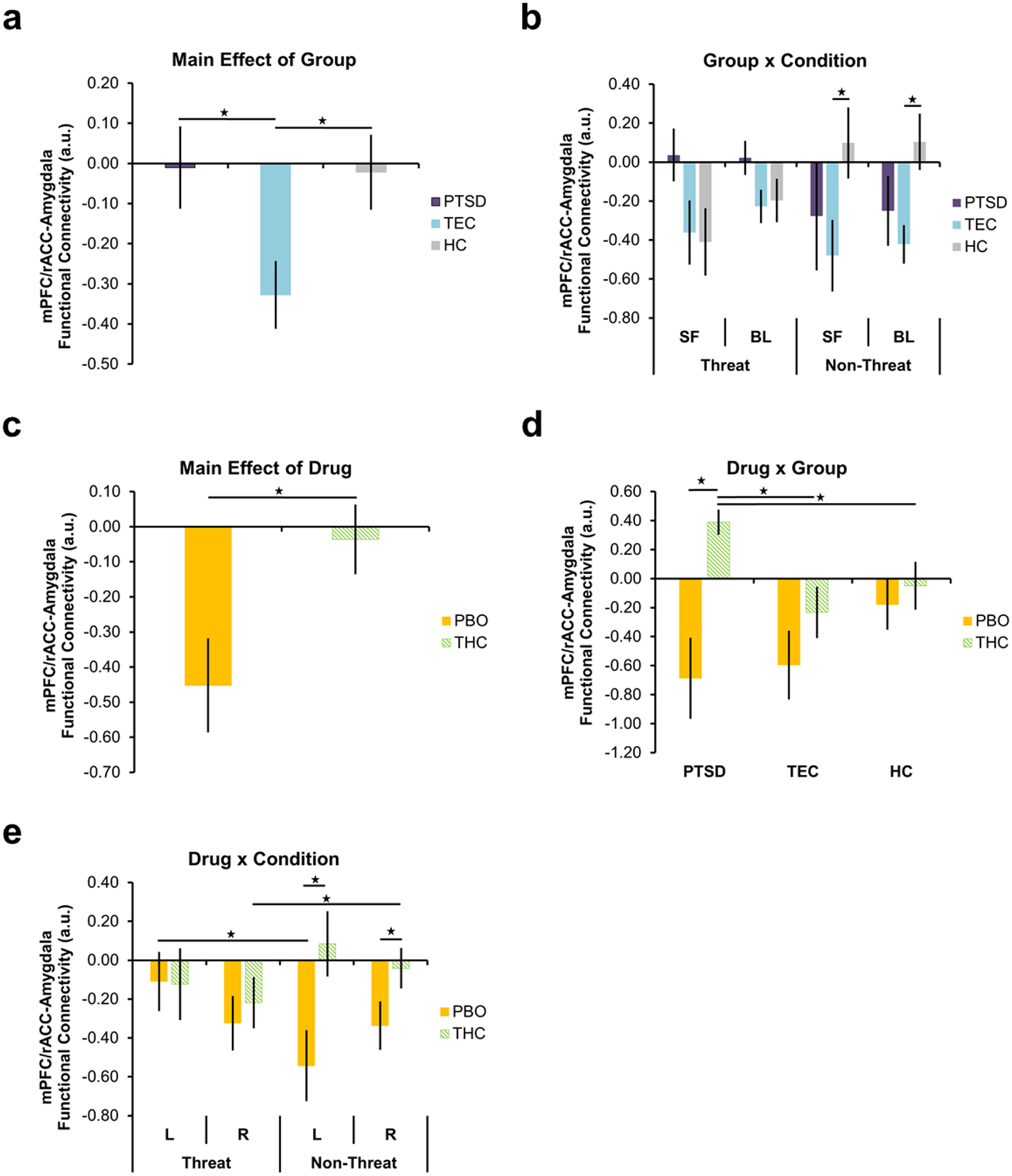Fig. 4.

Significant main effect of group on functional connectivity between the mPFC/rACC and right amygdala as a whole (a), group × condition interaction on functional connectivity between the mPFC/rACC and SF and BL subdivisions of the right amygdala (b), main effect of drug on functional connectivity between the mPFC/rACC and SF subdivision of the right amygdala (c), drug × condition interaction on functional connectivity between the mPFC/rACC and SF subdivision of the left and right amygdala (d), and drug × group interaction on functional connectivity between the SF subdivision of the right amygdala (e). Stars indicate significant within- and between-group differences in corticolimbic functional connectivity. Error bars represent standard error of the mean. L = left; R = right; mPFC/rACC = medial prefrontal cortex/rostral anterior cingulate cortex; SF = superficial subdivision; BL = basolateral subdivision; PTSD = posttraumatic stress disorder; TEC = trauma-exposed control; HC = healthy control; PBO = placebo; THC = Δ9-tetrahydrocannabidiol; a.u. = arbitrary units
